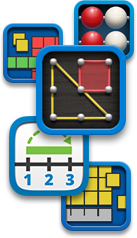Whole brain teaching refers to a set of strategies that are used in classrooms everywhere to maximize active learning and student engagement. The idea behind whole brain teaching is to focus on the way that the brain was designed to learn and to activate each part of the brain individually. Whole brain teaching can easily be modified to better accommodate any grade level or specific class needs, but generally follows the same seven major “rules” in any school. These seven rules do not follow any specific order and can be used in any variation but are designed to activate each area of the students brain and effectively manage the classroom. The seven major rules to using whole brain teaching are named: class-yes, teach-okay, switch, scoreboard, hands and eyes, class rules, and mirror. Each of the seven rules bring something different to this teaching approach but together they accomplish all of the following: grabbing the students immediate attention, engaging the students brain, directly instructing the class, allowing the students to work collaboratively, and character education. The methods used for whole brain teaching are all research based and can be used as early as pre-k. Check out the video below to see whole brain teaching in action!
I believe that whole brain teaching is overall a great way to help your students get the most out of classroom instruction. The rules are designed to challenge the students to remember what is taught and then teach the material to a peer. The rule that I find most interesting of the big seven is scoreboard. This teaching strategy is used mostly as a way to improve classroom management but can be modified in almost any way to become whatever the teacher and students want it to become. In this strategy, the teacher will come up with a scoreboard to keep track of anything she wants to keep track of. The teacher might want to track students good and bad behavior or even track their academic performance. I like this teaching strategy the best because it can be used in a variety of ways to motivate students in any way the teacher sees fit. Scoreboard can also be modified to give students rewards to add extra motivation.





